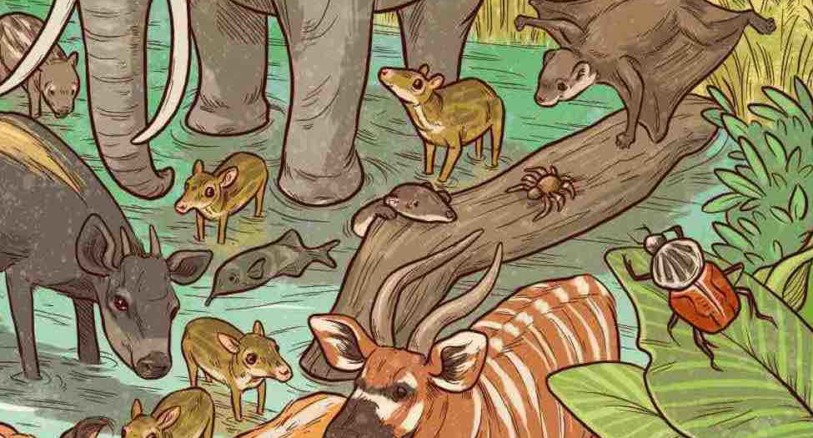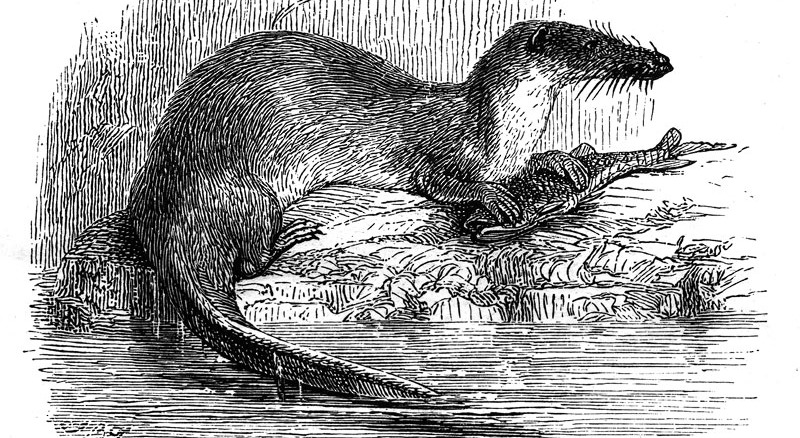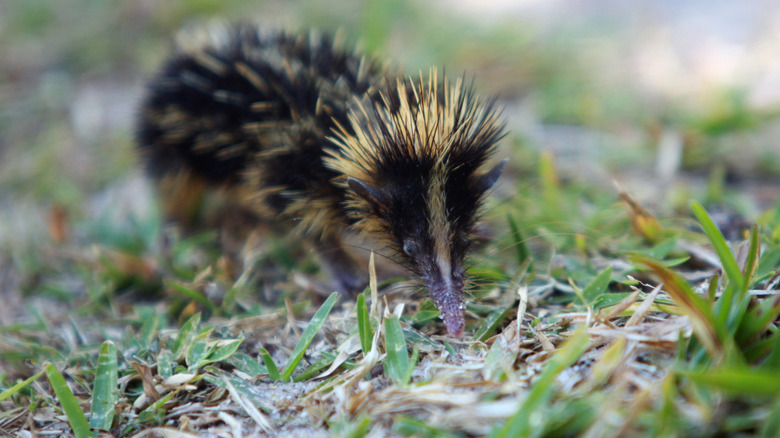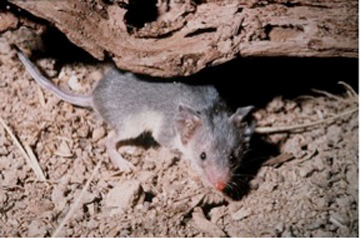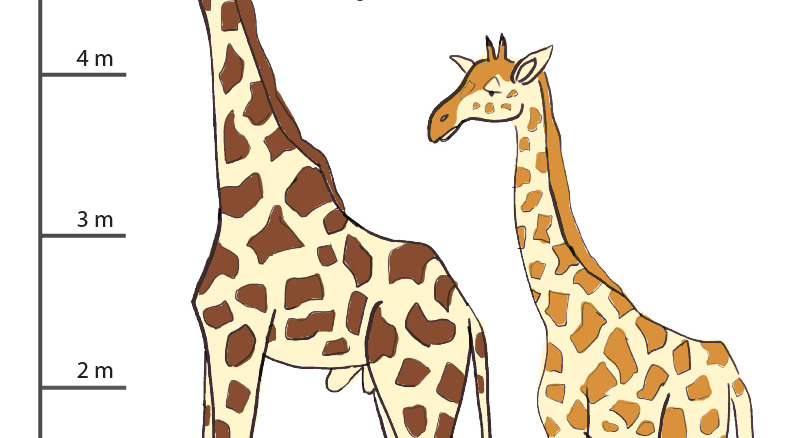Fiona Maisels is a conservation scientist at the Wildlife Conservation Society. She is an expert on forest elephants, a species of elephant found in the rainforests of central and west Africa. Fiona observes the vital role that elephants play in the Congo Basin rainforest: “They’re the functional glue that makes everything click together in the system.” What does she mean?

Here are three ways that forest elephants are like ecological glue for the rainforests of Africa:
1. Elephants eat a lot of fruit from many different types of plants. Then they poop out the seeds. Elephants are a major seed disperser of trees in the forest. They help create the structure of the forest by determining where different kinds of trees and other plants grow.
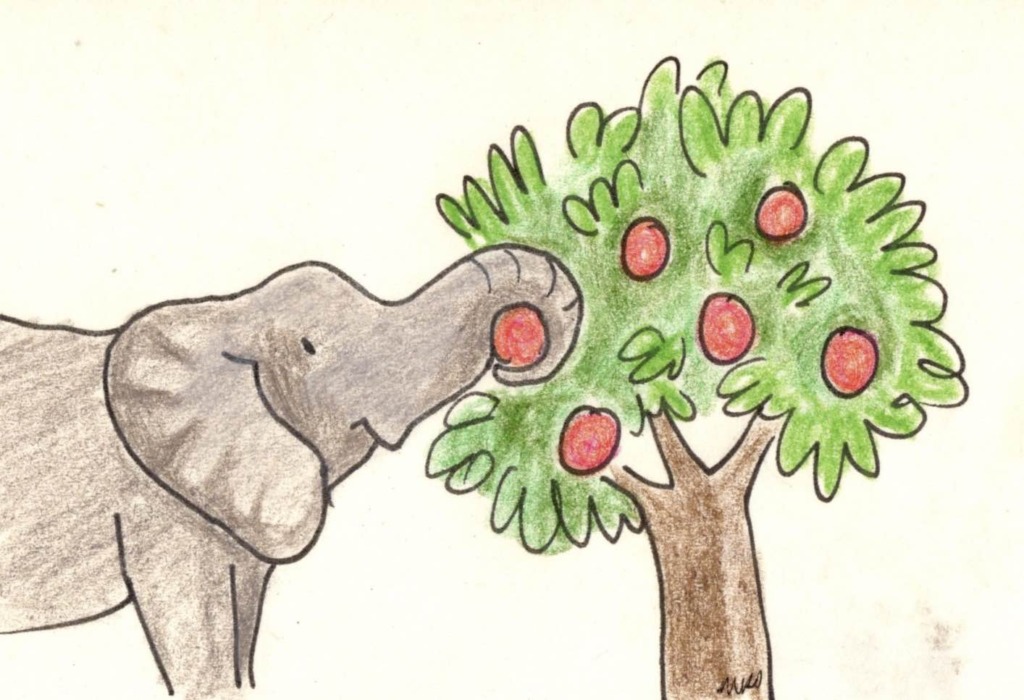
2. By helping build the structure of the forest, elephants create habitats for many different kinds of animals. Thousands of species of mammals, birds, reptiles, amphibians, insects, and other invertebrate species live in the roots, trunks, canopies, and other habitats created by the combinations of plants that elephants help create through seed dispersal.
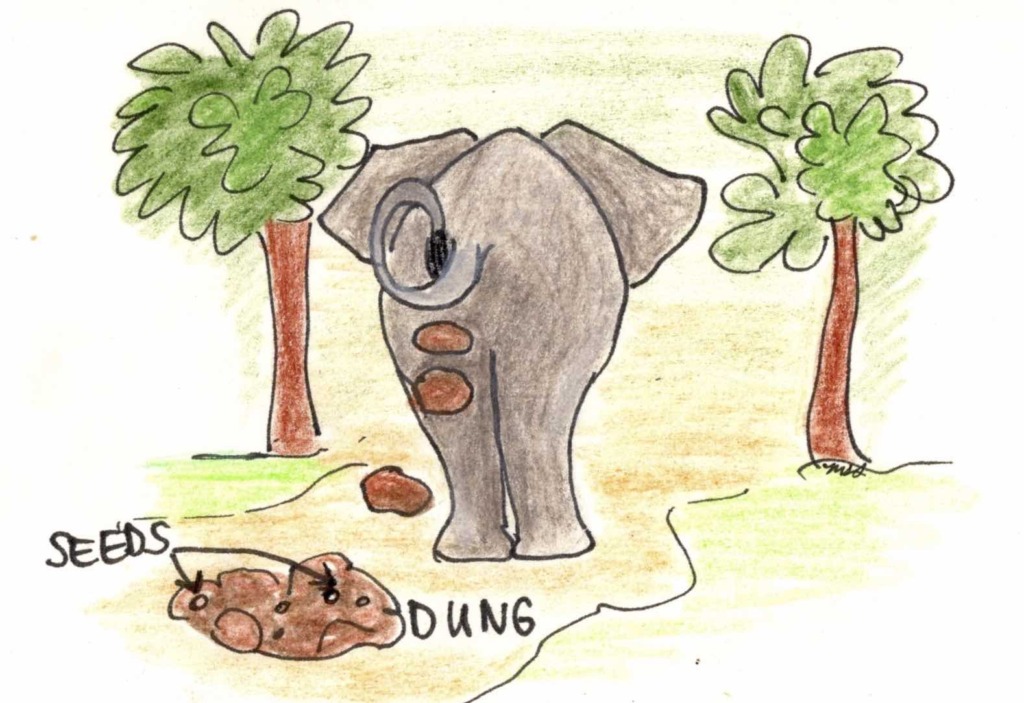
3. Elephants create networks of trails and clearings in the forest. These clearings are called bais, and are visited by sometimes 80 or more elephants per day. The bais and the trails that connect them are used by many other species of animals like gorillas, monkeys, wild pigs, antelope, and leopards. Elephants help connect populations of other species through their networks of forest trails.
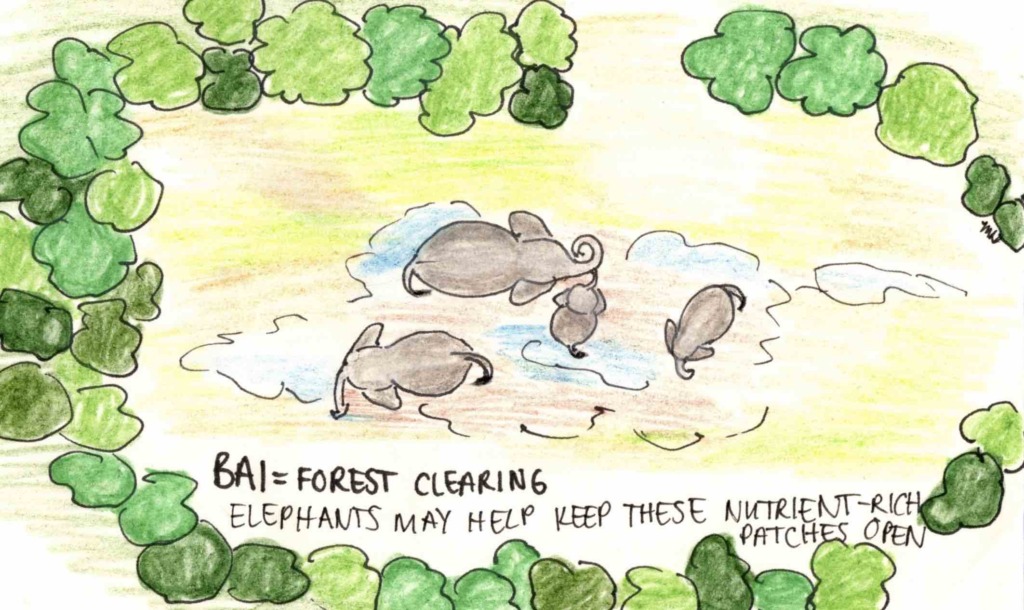
This story was written by David Brown for Mongabay Kids, with illustrations by Megan Strauss. It is loosely based on a Mongabay Explores podcast episode about forest elephants, hosted by Mike DiGirolamo and featuring Fiona Maisels and Andrew Davies. Learn more here:
You may also like
